
Ormer Leslie "Lock" Locklear was an American daredevil stunt pilot and film actor.
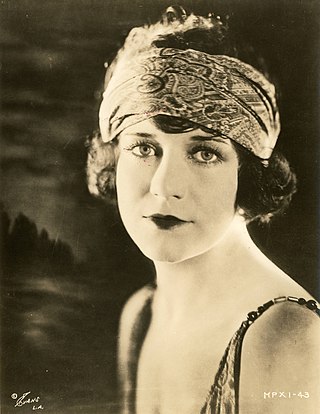
Viola Dana was an American film actress who was successful during the era of silent films. She appeared in over 100 films, but was unable to make the transition to sound films.

Beverly Homer DeLay was an American aviator who pioneered many of the popular stunts used in the early barnstorming air-shows. He soon adapted them for the movies, where he appeared with top Hollywood stars. DeLay died in a plane crash that was almost certainly caused by sabotage, but no one was ever charged in connection with the death.

The Great Waldo Pepper is a 1975 American drama film directed, produced, and co-written by George Roy Hill. Set during 1926–1931, the film stars Robert Redford as a disaffected World War I veteran pilot who missed the opportunity to fly in combat, and examines his sense of postwar dislocation in 1920s America. The cast includes Margot Kidder, Bo Svenson, Edward Herrmann and Susan Sarandon. The Great Waldo Pepper depicts barnstorming during the 1920s and the accidents that led to aviation regulations by the Air Commerce Act.
Stunt flying refers to any stunts performed in an aircraft. It encompasses aerobatics, wing walking, and transferring from one airplane to another or to a moving vehicle on the ground, such as an automobile or train, and vice versa.
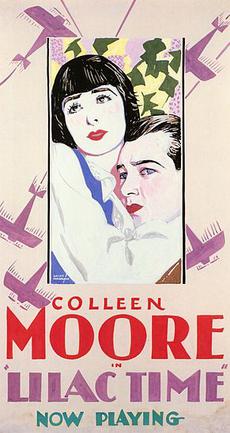
Lilac Time is a 1928 American synchronized sound romantic war film directed by George Fitzmaurice and starring Colleen Moore and Gary Cooper. While the film has no audible dialog, it was released with a synchronized musical score with sound effects using the sound-on-disc Vitaphone process. The film is about young American aviators fighting for Britain during World War I who are billeted in a field next to a farmhouse in France. The daughter who lives on the farm meets one of the new aviators who is attracted to her. As the flyers head off on a mission, the young aviator promises to return to her.
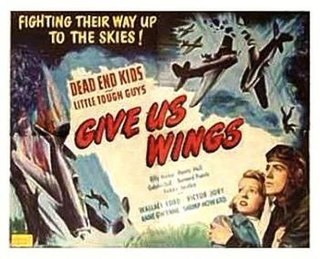
Give Us Wings is a 1940 Universal comedic film starring the Dead End Kids and the Little Tough Guys. Several members of the casts of those series were also featured in "The East Side Kids" films.

The Great Air Robbery is a six-reel silent 1919 American drama film directed by Jacques Jaccard and produced by Universal Pictures. The film stars Ormer Locklear, Allan Forrest and Ray Ripley. The Great Air Robbery is a film that showcases the talents of stunt pilot Locklear, considered the foremost "aviation stunt man in the world", and depicts pilots flying air mail, the first film to deal with the subject. There are no known archival holdings of the film, so it is presumably a lost film.
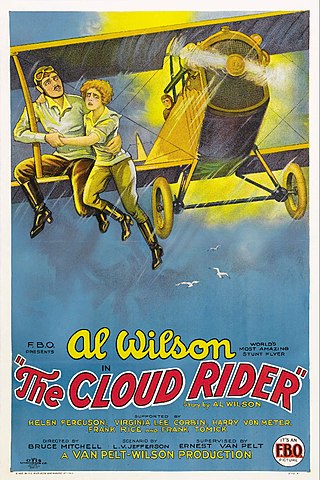
The Cloud Rider is a 1925 American silent action adventure aviation film directed by Bruce M. Mitchell and starring Al Wilson and Virginia Lee Corbin. It was distributed by Film Booking Offices of America.The Cloud Rider was one of a series of films that showcased the exploits of the stunt pilots in Hollywood.

The Phantom Flyer is a 1928 American silent Western and aviation film directed by Bruce M. Mitchell and starring Al Wilson, Lillian Gilmore and Buck Connors. The film was produced and distributed by the Universal Pictures. The Phantom Flyer was one of a series of films that showcased the exploits of the stunt pilots in Hollywood.

Frank Clarke was a Hollywood stunt pilot, actor, and military officer. His most prominent role was as Leutnant von Bruen in the 1930 production Hell's Angels, but he flew for the camera and performed stunts in more than a dozen films in the 1930s and 1940s. Clarke was killed in an aircraft crash near Isabella, California, in 1948.

The Flying Marine is a 1929 American sound part-talkie action film directed by Albert S. Rogell and starring Ben Lyon, Shirley Mason and Jason Robards Sr. In addition to sequences with audible dialogue or talking sequences, the film features a synchronized musical score and sound effects along with English intertitles. The soundtrack was recorded using the Western Electric sound-on-film system.

Flying Romeos is a 1928 American comedy adventure directed by Mervyn LeRoy and written by John McDermott, Sidney Lazarus, Gene Towne and John W. Conway. The film stars the comedy team of Charles Murray and George Sidney, stars of Universal's popular "The Cohens and Kellys" comedies, moonlighting at First National Pictures. Other sidekicks included Fritzi Ridgeway, Lester Bernard, Duke Martin, James Bradbury Jr. and Belle Mitchell. Flying Romeos was released on February 26, 1928, by First National Pictures, typically a B movie studio.

The Flying Mail is a 1926 American silent action film directed by Noel M. Smith. The film stars Al Wilson, Joseph W. Girard and Kathleen Myers. The Flying Mail was one of a series of films that showcased the exploits of the air mail service.
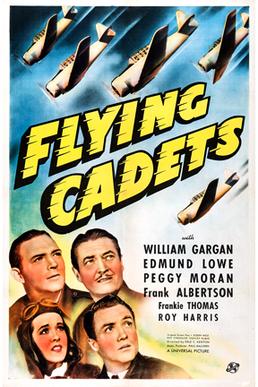
Flying Cadets is a 1941 American adventure film directed by Erle C. Kenton and written by George Waggner, Roy Chanslor and Stanley Rubin. The film stars William Gargan, Edmund Lowe, Peggy Moran, Frank Albertson, Frankie Thomas and Riley Hill. Flying Cadets was released on October 24, 1941, by Universal Pictures.

The Sky Skidder is a 1929 American action film directed by Bruce M. Mitchell and written by Carl Krusada and Gardner Bradford. The film stars Al Wilson, Helen Foster, Wilbur McGaugh and Gilbert Holmes. The film was released on January 13, 1929, by Universal Pictures.
The Sky Raider is a 1925 American silent drama film directed by T. Hayes Hunter and starring Charles Nungesser, Jacqueline Logan and Gladys Walton. With the interest in the aviators of World War I, producer Gilbert E. Gable and Arcadia Productions, were able to showcase the talents of Nungesser, a genuine hero, who had 43 aerial victories, as the third-highest French ace. The Sky Raider was based on the short story, "The Great Air Mail Robbery" by Jack Lait.

The Air Hawk is a 1924 American silent action adventure film directed by Bruce M. Mitchell and starring real life aviator Al Wilson. The aviation film was produced and distributed by Universal Pictures.

Three Miles Up is a 1927 American silent action film directed by Bruce M. Mitchell. The film stars Al Wilson, William Malan and Ethlyne Clair. Three Miles Up was one of a series of films that showcased the exploits of the stunt pilots in Hollywood.
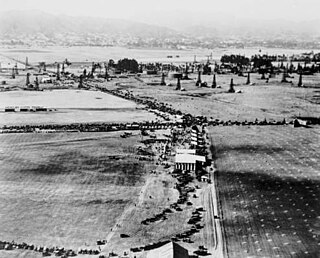
Mercury Aviation Company was one of the first commercial airline services founded in 1919 by Cecil B. DeMille. DeMille, Hollywood American film director and producer, was one of the first to see the aircraft's potential in commercial airline service. At first Mercury Aviation flew World War I surplus Curtiss JN-4 Jenny for sightseeing and charter flights from DeMille Field No. 1 and then later purchased passenger planes. DeMille restored a World War I plane in 1917. Mercury Aviation Company did not make a profit and closed in 1922 after two years of operation. Al Wilson was DeMille's flight instructor and became the manager of the company for a short time.



















